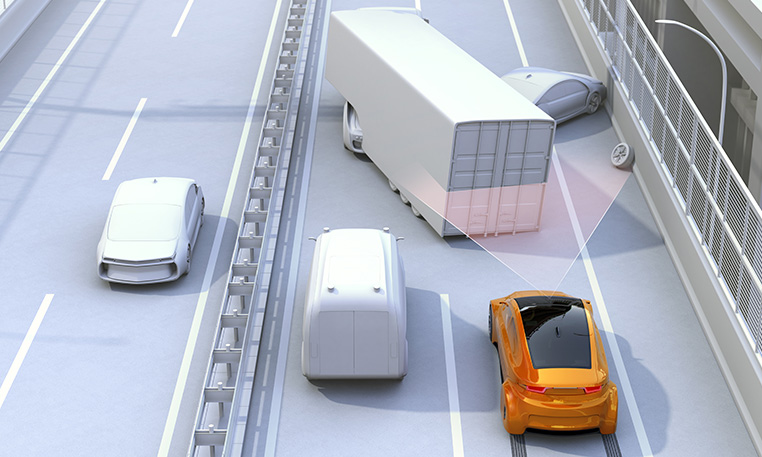Has Tesla laid the groundwork for autonomous vehicle insurance?
By Amir Sadiq

In its 1Q2019 earnings call, Tesla CEO Elon Musk confirmed that the automotive and energy company is working to provide an insurance product for its autonomous vehicles (AV), which may be based around Tesla’s Autopilot self-driving system.
While details on Tesla’s new insurance product has yet to be released, there is a good chance it will look to offer lower premiums. Given that Tesla has more information about its cars and their owners, theoretically it will be able to price its risk better.
“We do give some more detailed information to insurance companies to help with rates,” said Mr Musk during the earnings call. “And obviously as we launch our own insurance product next month, we will certainly incorporate that information into the insurance rates.
The reliability of AVs
Getting AVs to work as intended has been a problem the automotive industry has been working on for the last few years. Tesla’s quarterly report in April seemed to show that AVs are indeed safer than vehicles driven only by humans.
“In the first quarter, we registered one accident for every 2.87m miles (4.62m km) driven in which drivers had Autopilot engaged,” said the report. “For those driving without Autopilot, we registered one accident for every 1.76m miles driven. By comparison, NHTSA’s (National Highway Traffic Safety Administration) most recent data shows that in the United States there is an automobile crash every 436,000 miles.”
The sentiment is backed up by a report by KPMG in February which referenced studies that said human error causes at least nine in 10 accidents.
And yet the reliability of AVs and whether or not they will be able to make the same decisions as humans is still hotly debated. Its case has also not been helped by the two Boeing 737 Max crashes earlier this year, a faulty sensor and the inability to disengage an automated anti-stall system were the main factors that doomed the two ill-fated flights.
Whose fault is it?
Then there is the question of who should assume liability in the event of an AV accident.
Does it fall on the driver, who is in command of the vehicle and arguably should be paying attention even when automated systems take over the vehicle? Or does it fall on the manufacturer who designed and built the machine in the first place?
Regulation surrounding this matter is still mostly up in the air, and existing liability laws have yet to evolve to take into account AVs. This is understandable, considering this issue represents unchartered territory for everyone involved.
Taking the questions of reliability and liability into consideration, insurers will have to navigate a veritable minefield of challenges as they seek to manage and underwrite risks for AVs, especially as they become more commonplace in the future.
There is little to no historical data to base risk models on, nor are there any case studies or examples to follow. Until now.
The dichotomy of AV accident liability
So far, only Tesla and South Korea appear to have stepped up to answer the question of liability
Back in April, Pulse News quoted a government source saying that the responsibility for driveway accidents involving self-driving cars will be placed on the driver in South Korea even though autonomous cars shift the responsibility of driving from humans to autonomous car technology.
On the flipside, Tesla’s partnership with State National will probably see the manufacturer assume liability, with the insurer only helping to develop the product and the Tesla shouldering the risk alongside its partners.
It is impossible to say how either of these cases will work out, especially considering the lack of concrete details about Tesla’s insurance product. But they do provide two dichotomous (with regard to who assumes liability) case studies which can be studied, analysed and learned from.
A roadmap for AV insurance?
Furthermore, if Tesla’s insurance offering works out well, it could signal to insurers that this collaborative strategy is a good way to approach AV insurance, at least in its early years.
World Economic Forum autonomous and urban mobility project head Michelle Avary wrote an article earlier this year in which she detailed three automotive vehicle trends to follow in 2019, one of which is the expectation of more collaborations.
“Designing, testing and manufacturing a new vehicle is expensive. CEOs don’t get to make many $3bn bets in their tenure,” she said in the article.
“Some companies will seek to minimise risks by partnering with others, which is one reason why I expect to see more mergers, collaborations, partnerships and consolidations in the autonomous vehicle industry.”
In similar fashion, insurers can collaborate with AV manufacturers to develop insurance products, while minimising risks to themselves. The AV manufacturers, who should know their own vehicles better than anyone else, will likely be able to manage their risks better than the insurers can.
These are exciting times and Tesla’s insurance offering could possibly represent a major step forward in AV insurance. Only time will tell.